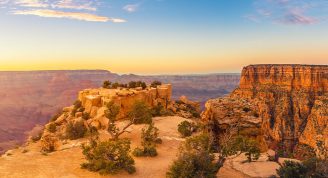Description
Retrace parts of the famous 1899 Harriman Expedition that went from Seattle to Siberia and understand why dozens of scientists, writers and artists joined the voyage. Experience the Tsimshian indigenous culture in Metlakatla. Visit and tour the Tongass National Forest by land and sea. Cruise past the six-mile-wide Hubbard Glacier and the incredible Misty Fjords in search of bears, seals, and sea otters. Trace winding fjords to hear the crackle of glaciers as they calve new icebergs. Nature lovers will delight not just in sweeping mountain and fjord views but also sightings of Bald Eagles, humpback whales, orca whales, Steller sea lions and harbor seals.
Trip Name
Seward to Vancouver: Canada & Alaska Expedition Cruise
Days
13
Overview
Vessel Type: Luxury Expedition
Length: 157 m
Passenger Capacity: 200/260
Built: 1994 Refurbished & Rebranded: 2017
After extensive refurbishment, Silver Cloud will be the most spacious and comfortable ice class vessel in expedition cruising. Her large suites, her destination itineraries and her unparalleled service make her truly special. Her five dining options will tantalise your taste buds and as 80% of her suites include a veranda, watching a breaching whale or a few cavorting penguins has never been so personal. Broad sweeping decks with multiple open spaces and a swimming pool complete what is surely the most distinctive expedition ship sailing today.
A limited number of guests, particularly with just 200 in polar waters, mean that Silver Cloud has the highest space to guest and crew to guest ratios in expedition cruising. With her 18 zodiacs, possibilities are almost limitless with ship-wide simultaneous explorations. Finally, a team of 19 passionate and dedicated experts are always at hand to ensure your voyage is enhanced every step of the way.
DECK 09 - Observation Lounge, Jogging Track
DECK 08 - Pool, Pool Bar, Hot Rocks, The Panorama Lounge, The Connoisseur’s Corner
DECK 07 - La Terrazza, The Spa at Silversea, Beauty Salon, The Library
DECK 06 - Lecture Theatre, The Fitness Centre, Reception/Guest Relations, Expedition Desk
DECK 05 - The Bar, Boutique, Casino
DECK 04 - Main Restaurant, Le Champagne, Launderette


















